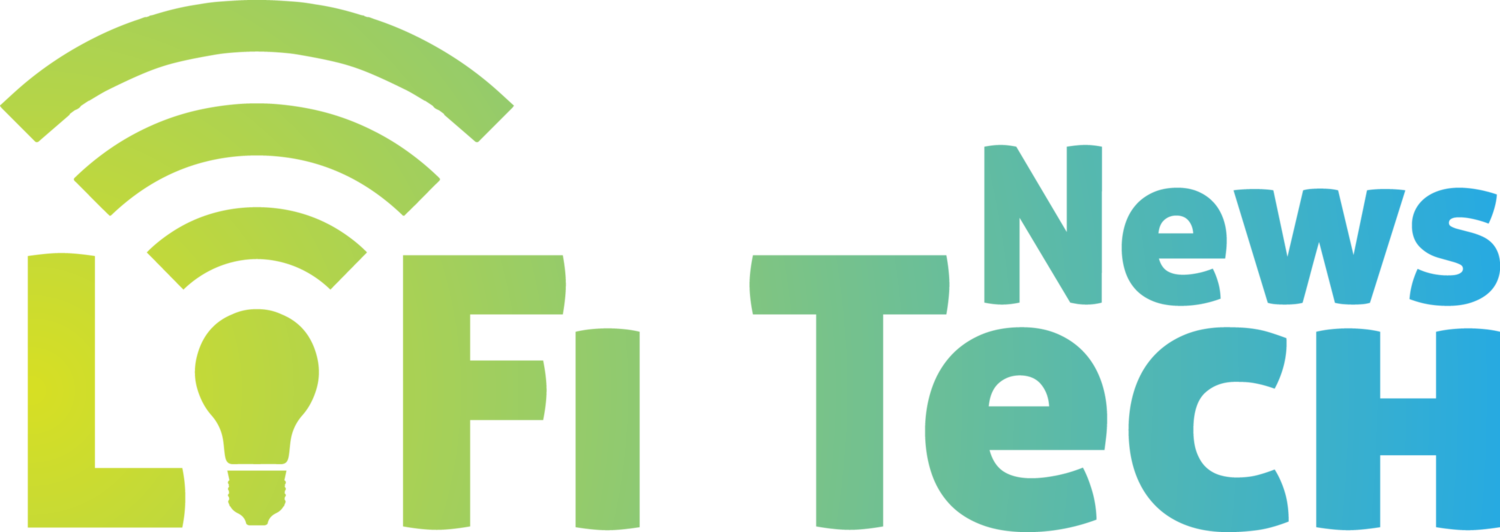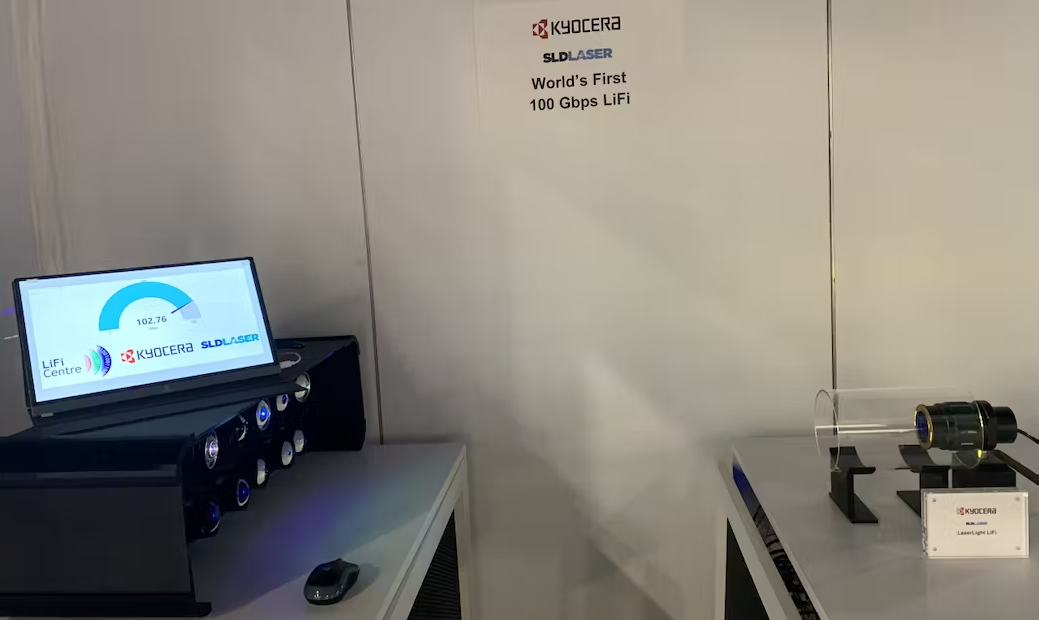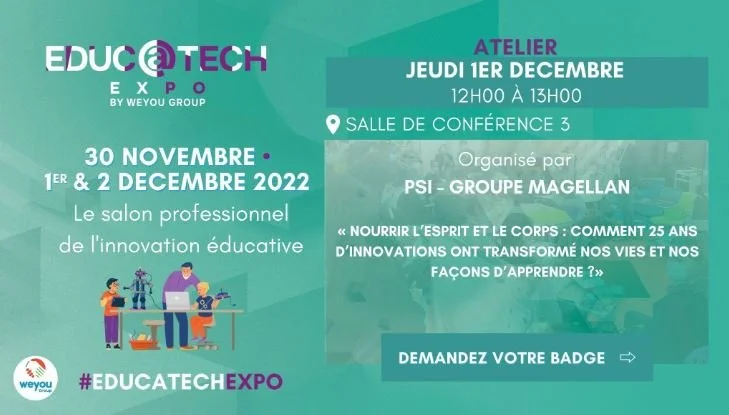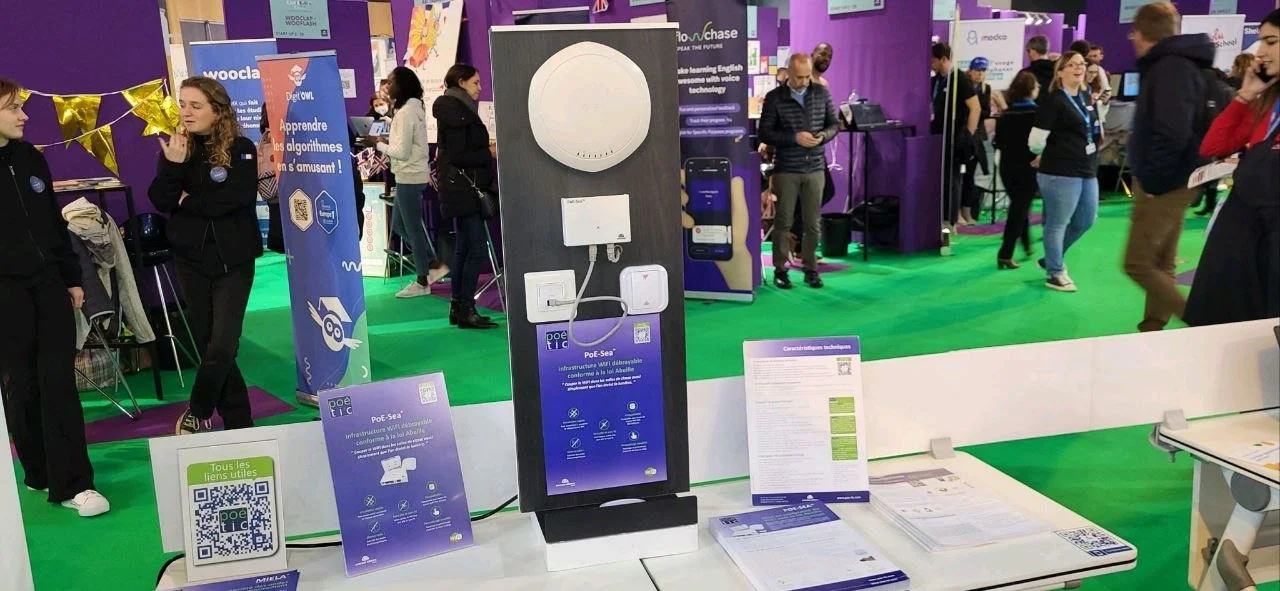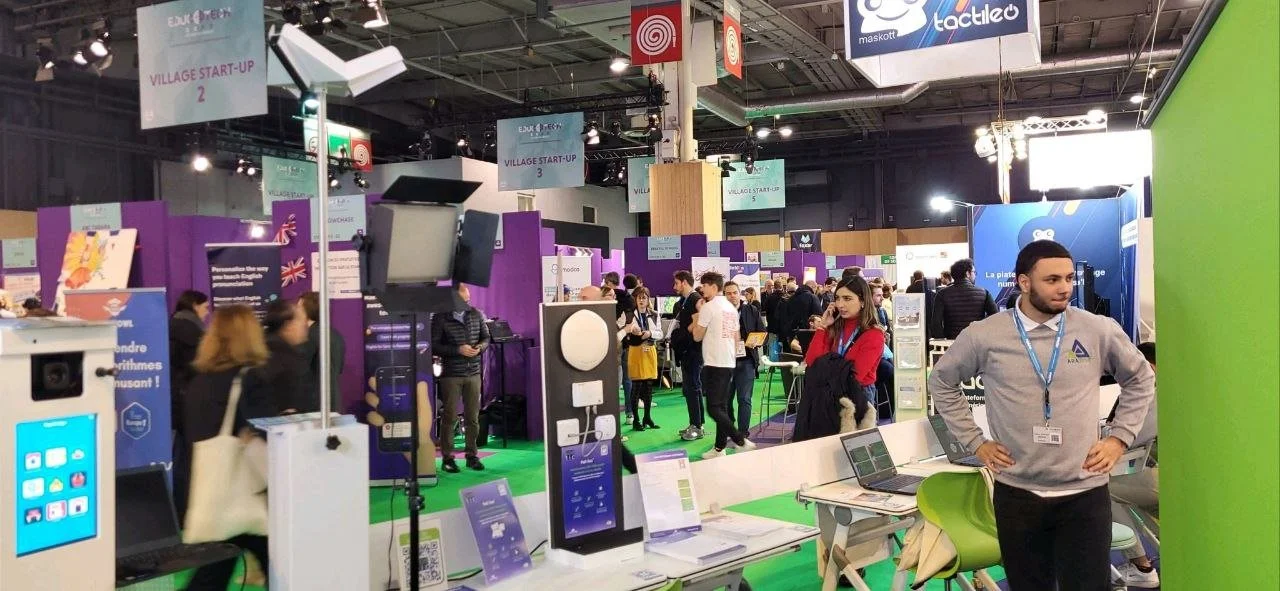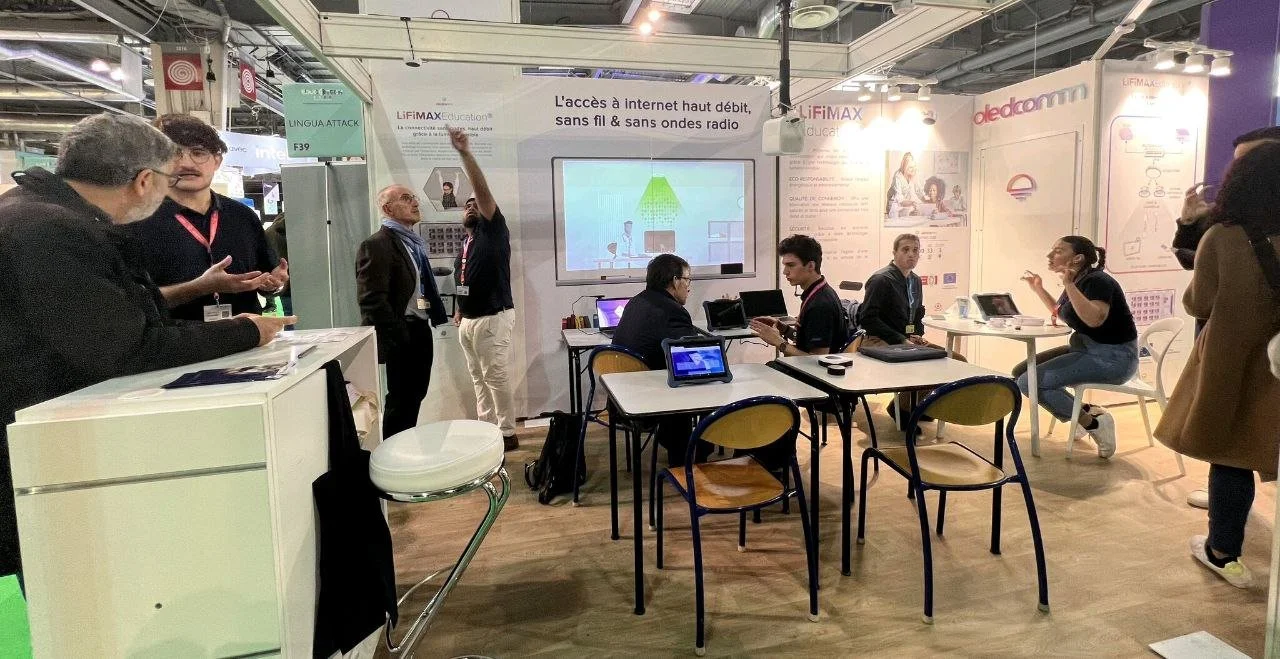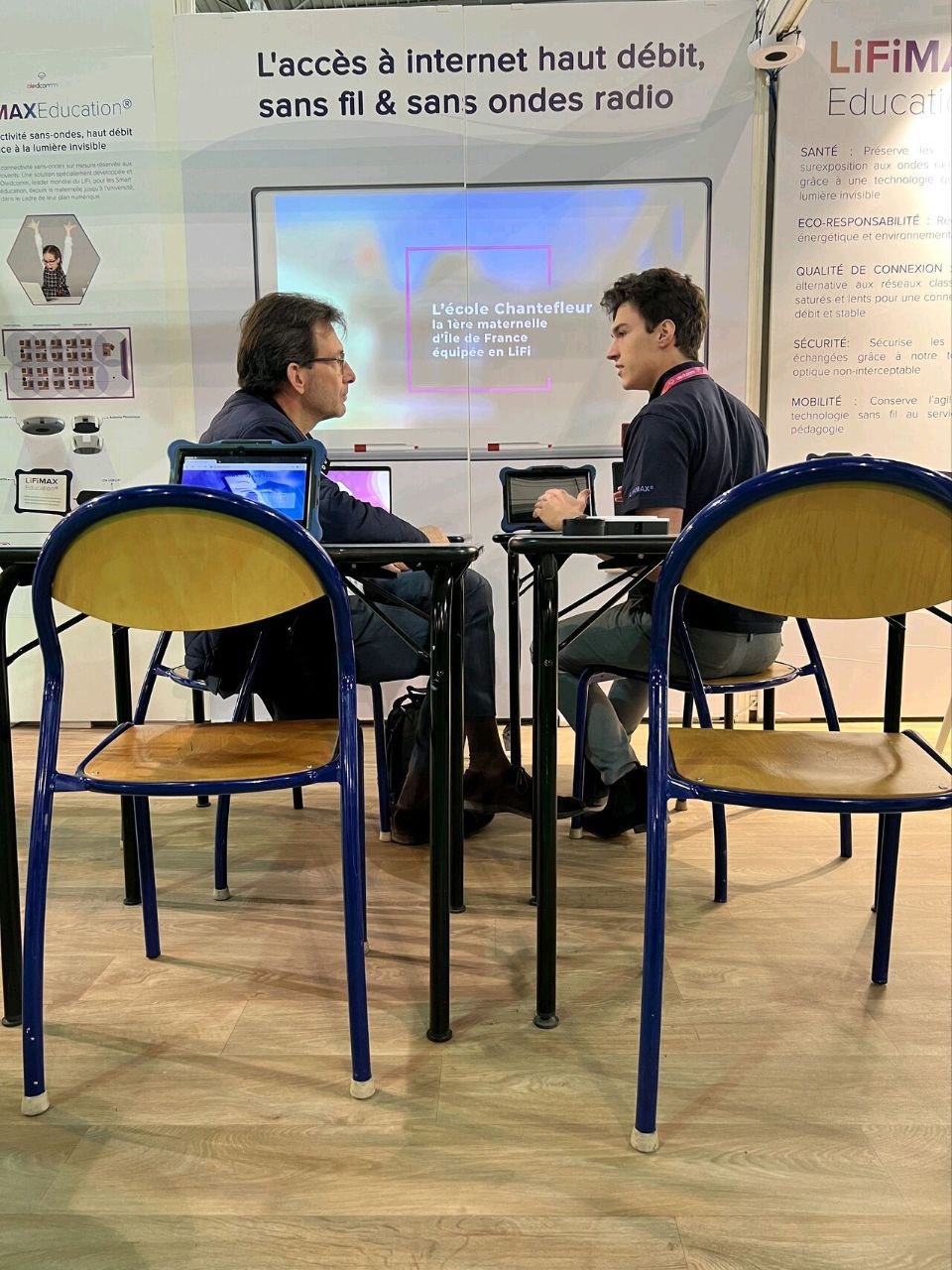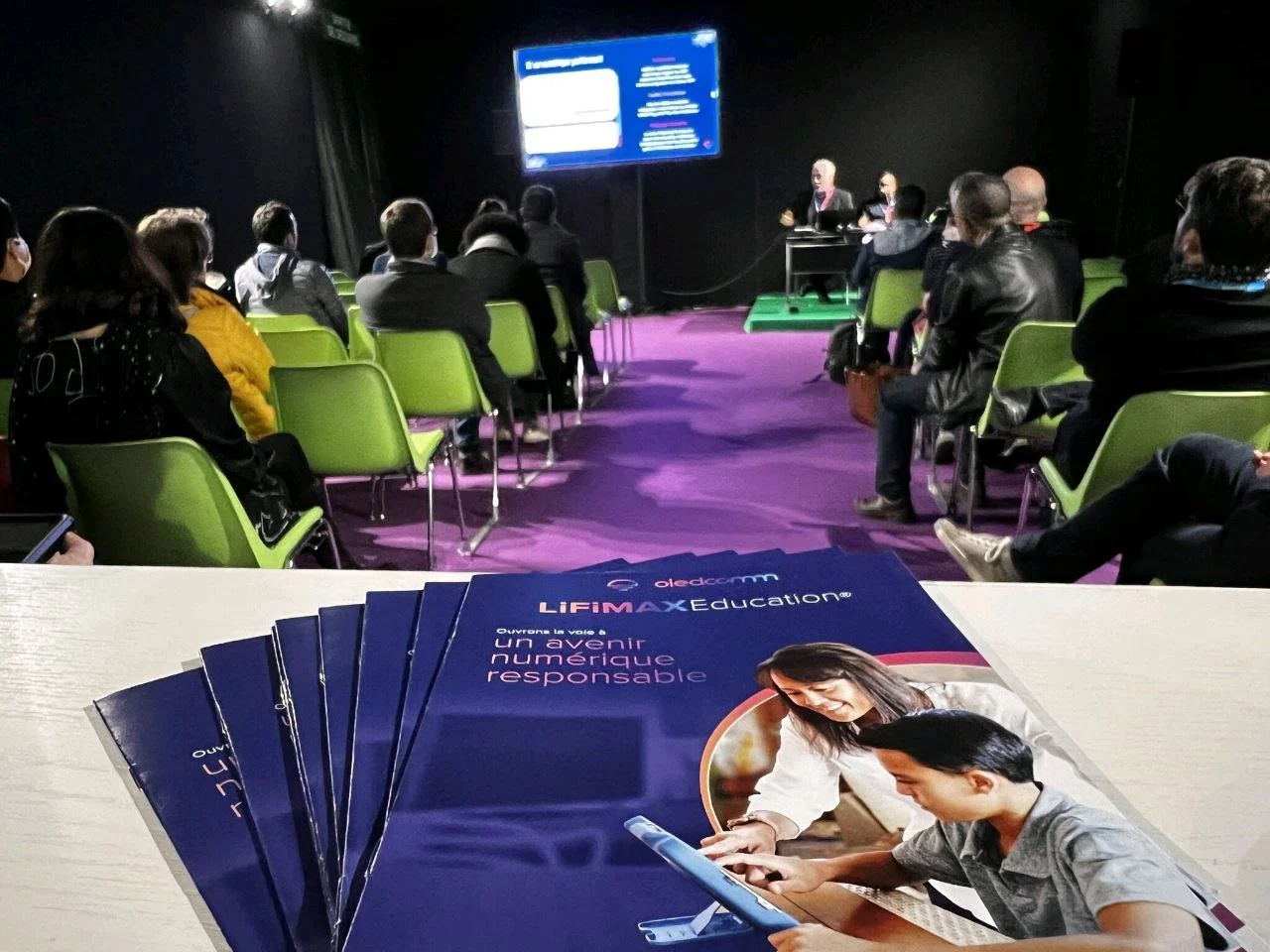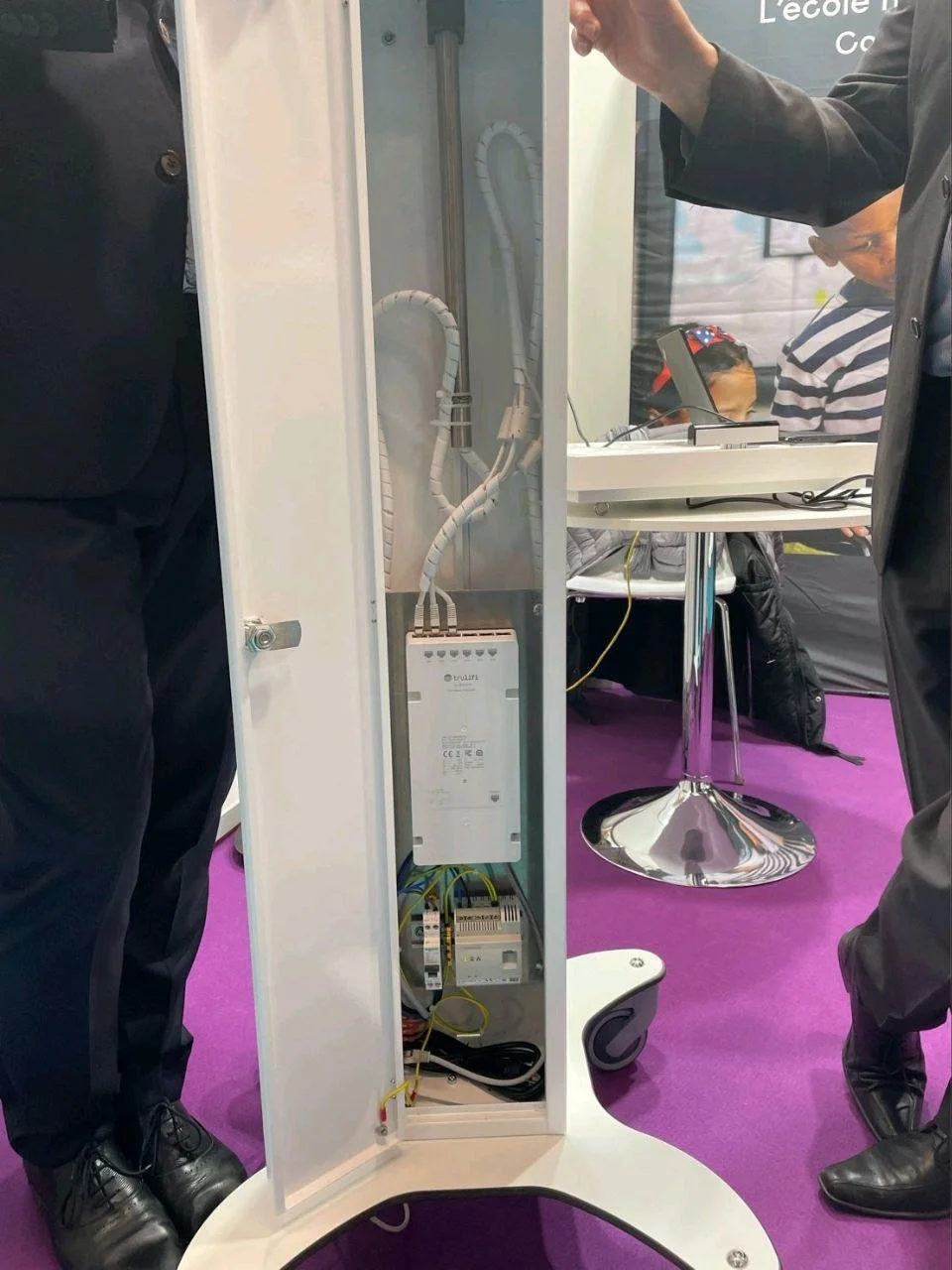Table of Contents
- LIFIMAX2G® at The Upcoming CES 2023
- CES 2023
- Oledcomm
- Li-Fi Conference 2022
- What is LiFi?
- How does LiFi work?
- LiFi Benefits
- LiFi Applications
- LiFi Systems Reviews by LiFi Tech News
- LiFi Tech News’ Take on the podcast episode
- Li-Fi Conference 2022
- What is LiFi?
- How does LiFi work?
- LiFi Benefits
- LiFi Applications
- LiFi Systems Reviews by LiFi Tech News
- LiFi Trends and Predictions
- 1) LiFi is here to stay
- 2) LiFi will still not replace WiFi
- 3) LiFi Miniaturisation will continue to expand for IoT devices
- 4) More LiFi SYSTEMS CUSTOMISATION will BE DEPLOYED
- 5) LiFi Internet Infrastructure will arise from 2023 onwards
- 6) LiFi Cities
- 7) LiFi Standardisation
- 8) LiFi Deployment in Defence Industry is growing
- 9) LiFi Demand
- 10) Educating the Masses on LiFi will start to intensify
- 11) LiFi and Laser
- Li-Fi Conference 2022
- What is LiFi?
- How does LiFi work?
- LiFi Benefits
- LiFi Applications
- LiFi Systems Reviews by LiFi Tech News
- Li-Fi Conference 2022
- What is LiFi?
- How does LiFi work?
- LiFi Benefits
- LiFi Applications
- LiFi Systems Reviews by LiFi Tech News
- Li-Fi Conference 2022
- What is LiFi?
- How does LiFi work?
- LiFi Benefits
- LiFi Applications
- LiFi Systems Reviews by LiFi Tech News
- LiFi Rewind 2022
- What is LiFi?
- How does LiFi work?
- LiFi Benefits
- LiFi Applications
- Comverde SAC
- Li-Fi Conference 2022
- What is LiFi?
- How does LiFi work?
- LiFi Benefits
- LiFi Applications
- LiFi Systems Reviews by LiFi Tech News
- Educ@tech Exposition 2022 Edition
- OLEDCOMM
- Educatech Expo Highlights
- PoE-Tic
- MIELA System
- Li-Fi Conference 2022
- What is LiFi?
- How does LiFi work?
- LiFi Benefits
- LiFi Applications
- LiFi Systems Reviews by LiFi Tech News
- Subscribe to LiFi Tech News
Oledcomm Announces The Unveiling of Their Latest System, LiFiMAX2G, at The Upcoming CES 2023
Photo credit to Oledcomm
LIFIMAX2G® at The Upcoming CES 2023
Oledcomm released a press statement today stating that they will unveil their latest LiFi system at CES 2023.
Oledcomm, the global leader in LiFi technology, is furthering its leadership at CES 2023. Oledcomm unveils LIFIMAX2G®, enabling the factory and transportation of the future to connect through invisible light. Oledcomm announces a doubling of the speed of its LiFiMAX range with a 2Gbps connection. Now even faster, more reliable and secure, LiFi is a high-performance, greener alternative to radio waves and cables, with low energy consumption.
Following the worldwide success of LiFiMAX Cybersecurity Solutions® launched at CES 2020, Oledcomm unveils its latest breakthrough in wireless optical communication. Oledcomm's LiFiMAX2G® enables industrial and rail and other mobility infrastructures to access high-speed transmissions securely, without interference and tamper-resistant.
LiFIMAX2G® is particularly suited for subways, trains and any vehicle that needs to download huge amounts of data in terabytes (images and videos) in less than 20 seconds as well as for industrial Industry 4.0 applications in augmented reality, IoT or M2M. As fast as Gigabit Ethernet, more secure than WiFi, and as small as a smoke detector, LiFiMAX2G® takes Vehicle-to-Infrastructure communications and connectivity for Industry 4.0 to a new level.
This new generation of LiFi transceivers doubles the speed achieved by the previous generation, now reaching nearly 2 Gigabits per second upstream and 2 Gigabits per second downstream at a distance of 1-5m. Also addressing the growing capabilities of IoT in rail or industrial 4.0 infrastructures, the use of invisible light avoids interference compared to other radio wave-based communication modes, allowing devices to exchange data safely at any time.
Benjamin Azoulay, President of Oledcomm, said: "The dizzying growth in the amount of data collected in mobility situations and the increase in multimedia flows require a reliable and uninterrupted communication standard for all, especially in transport and factory 4.0. We are proud to contribute to the development of these new standards."
Oledcomm will be exhibiting at CES from January 5-8 in booth 59206. Industrial LiFi-connected augmented reality (AR) application demos as well as V2I (Vehicle to Infrastructure) connection demos will be performed upon request.
CES 2023
As stated on their website, CES is the most influential tech event in the world and the proving ground for breakthrough technologies and global innovators. This is where the world's biggest brands do business and meet new partners, and the sharpest innovators hit the stage. Owned and produced by the Consumer Technology Association (CTA)®, CES features every aspect of the tech sector.
CES showcases companies including manufacturers, developers and suppliers of consumer technology hardware, content, technology delivery systems and more. It also includes a conference program where the world's business leaders and pioneering thinkers address the industry's most relevant issues.
CES® 2023 will be held in Las Vegas from the 5th to the 08th of January 2023 providing global audience access to major brands and startups, as well as the world’s most influential leaders. Over 1900 companies have committed to exhibiting in Las Vegas and many more are being added each week.
Oledcomm
Oledcomm designs and develops LiFi network interface devices that enable high-speed wireless data communication. It also serves LiFi equipment in the telecom, datacom, personal electronics, and industrial markets. The company’s product portfolio includes hubs, routers, switches, adapters, drivers, power supplies, and more.
Oledcomm was founded in 2012 and is based in Paris, France. Oledcomm's adventure began in 2005 in the research laboratories of the University of Versailles-Saint-Quentin with the first work on communication by visible light.
Following years of research & development and a passion for innovation, Oledcomm became the pioneer of LiFi (Light Fidelity) solutions and innovation on a global scale.
Based in the Paris region, Oledcomm employs around 20 people and designs complete solutions for LiFi operation, including microcontrollers, LiFi photoreceivers and software platforms.
Today, after more than 33 patents, 15 years of R&D, over 500 trusted clients and several awards, Oledcomm is pursuing a strong mission: to transform the 14 billion points of light in the world into a powerful communication network.
The company is ISO 9001:2015 and ISO 14001:2015 certified. Oledcomm's LiFi offering solves connectivity problems by replacing cables in environments where radio waves are undesirable. Targeted sectors include space, defence, industrial and education. Since 2020, LiFiMAX® has been installed and tested in more than 800 projects worldwide and has been validated by ORANGE for Cybersecurity.
At the Mobile World Congress in Barcelona in 2021, Oledcomm announced an integrated circuit (ASIC) that enables native LiFi integration in tablets, PCs or smartphones. Oledcomm is a laureate of the European Deeptech EIC Accelerator program, which provides for the European Commission to invest in Oledcomm through the EIC Fund.
Article source: Oledcomm
Li-Fi Conference 2022
The Li-Fi Conference 2022 Edition was a great success. Li Fi Tech News will very soon write articles on the topics treated at the Conference.
What is LiFi?
LiFi, also known as "Light Fidelity" is a wireless optical networking technology, which uses light-emitting diodes (LEDs) to transmit data. In 2011, professor Harald Haas made a LiFi demonstration at the TED (Technology, Entertainment, Design) Global Talk on Visible Light Communication (VLC).
VLC uses light as a medium to deliver high-speed communication like Wi-Fi and complies with the IEEE standard IEEE 802.15.7. The IEEE 802.15.7 is a high-speed, bidirectional, and fully networked wireless communication technology-based standard similar to Wi-Fi's IEEE 802.11.
How does LiFi work?
LiFi is a high speed, bidirectional, and fully networked wireless communication of data using light. LiFi constitutes of several light bulbs that form a wireless network.
When an electrical current goes through to a LED light bulb, a stream of light (photons) emits from the lamp. LED bulbs are semiconductor devices, which means that the brightness of the light flowing through them can change at extremely high speeds. The signal is sent by modulating the light at different rates. The signal can then be received by a detector that interprets the changes in light intensity (the signal) as data. Also when the LED is ON, you transmit a digital 1, and when it is OFF, you transmit a 0.
LiFi Benefits
The primary benefits of LiFi are as follows:
• Security: Provides entirely secure access. Where there is no light there is no data.
• Safety: Does not produce electromagnetic radiation and does not interfere with existing electronic systems.
• Localisation: Allows localisation due to the small coverage area of LiFi access point - localisation can be used for very precise asset tracking.
• Data density: Provides ubiquitous high-speed wireless access that offers substantially greater data density (data rate per unit area) than RF through high bandwidth reuse.
Credit to Oledcomm
LiFi Applications
LiFi can be used for so many applications and the list is increasing every year. You can read our updated list of Li-Fi applications at the following link:
Credit to pureLiFi
LiFi Systems Reviews by LiFi Tech News
OLEDCOMM LIFIMAX KIT REVIEW - ONE YEAR IN
We reviewed the LiFiMax kit produced by the leading French LiFi company Oledcomm. We bought this LiFi kit system at the end of 2020. After over a year of use, we decided to write a review of this LiFi system. We looked briefly at the profile of Oledcomm, a brief history of the LiFiMax system, the Kit box contents, some testing and performance results of this LiFi system, the customer experience and our own verdict (the good and the bad points) of the LiFiMax kit.
You can read the review on this link:
https://www.lifitn.com/blog/lifimaxreview
SIGNIFY TRULIFI 6002.1 STARTER KIT SYSTEM REVIEW
We also reviewed the Trulifi 6002.1 starter kit produced by Signify, the world leader in lighting for professionals, consumers and lighting for the Internet of Things. We got this LiFi kit system with the help of PCDSI and Signify around August 2021. In a similar fashion done with our previous review of the LiFiMax kit a few months ago, we will look briefly at the profile of Signify, a brief history of the Trulifi 6002.1 kit, the Kit box contents, some testing and performance results of this LiFi system, the customer experience and our own verdict (the good points and the bad points) of the Trulifi 6002.1 kit.
You can read the review on this link:
https://www.lifitn.com/blog/trulifi6002review
In conclusion, if you are also interested to hear more information about the OWNII Coin or enquire about LiFi devices such as the LiFiMax and Trulifi, you can contact us through our chatbot or by sending an email through our contact us form. If you enjoyed this post and would like to hear more updates about LiFi technology, subscribe to our newsletter. Don’t forget to subscribe to our social media accounts. You can also join our Telegram group about LiFi technology on this link:
https://t.me/joinchat/FMzOmsEKyJFrU6Af
